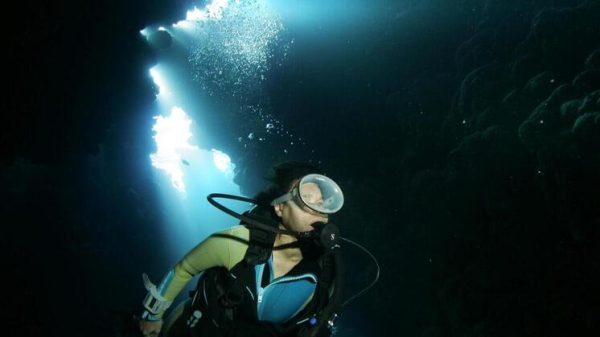The new product is supposed to be used for delivery and espionage
Scientists from New Mexico are creating a “vacuum” balloon that can move “as fast as a passenger airliner” for the purpose of transportation people, package delivery and… espionage. Such balloons are expected to outperform traditional helium or hydrogen balloons and have the potential to carry objects in the air indefinitely.
 Photo: lanl.gov
Photo: lanl.gov
Scientists at Los Alamos National Laboratory in New Mexico are working on "vacuum” a hard-shell balloon that could eventually carry people and travel «as fast as a passenger airliner.»
Miles Boe, a physicist at the lab, told DailyMail.com in an exclusive interview that if his experiments are successful, the device could be used for transportation, surveillance and even delivery of packages by unmanned aerial vehicles.
According to the Daily Mail, Bo and fellow chemist Chris Hamilton made small, hollow spheres from an ultra-light material called aerogel, then pumped the air out of them in an attempt to create a solid ball that was lighter than the surrounding atmosphere and allowed it to float.
"Vacuum” the cylinders will outperform traditional helium or hydrogen cylinders, which slowly lose their lift and could potentially levitate objects indefinitely.
Patents filed for the potential craft include designs that intriguingly resemble a tic-tac-toe UFO , encountered by Navy pilots in 2004, who hovered over the ocean and sped off with incredible acceleration.
But Miles Boe says that while he has made rapid progress since the start of 2019 and is confident of eventual success, before actually creating the floating ball – not to mention supersonic «tic-tac-toe» — his research is still a couple of years old.
"We haven't been able to make anything float yet. But we tested vessels that are 34 times as dense as air,” Bo says. – And we demonstrated a proof of concept for creating vessels that are 10 times as dense as air. So we're within one order of magnitude of actually achieving airborne buoyancy.»
The physicist told DailyMail.com he's been dreaming about vacuum balloons since he first heard about the ultra-light material aerogel.
"They are at least 98% empty space. So they are basically made out of nothing. I've always had the idea that maybe you could make one of these with a low enough density that it would float in the air,» Bo says.
«The only way to create a structure that would be less dense than air is to create a shell of the material and remove the air from the inside, says Miles Boe. “And that’s what we explored in these projects.”
He compared spheres filled with air to sunken ships filled with water.
"These are sunken ships at the bottom of the ocean of air. And only by removing the air from inside the vessel will they be able to float,” he said.
The models Beau experimented with were only a few inches wide, too small to float. But he calculated that a sphere the size of a basketball, made of polyimide airgel and reinforced with a lattice of tiny threads, would be enough for takeoff at sea level.
He said that for ascent in the thinner air of Los Angeles, Alamosa, where the elevation is 7,500 feet above sea level, would require a sphere approximately 4.5 feet in diameter.
The physicist is currently seeking funding to continue his research.
And although this is cutting-edge science, the idea of vacuum cylinders is far from new, notes the Daily Mail. In 1670, the Italian Jesuit priest Francesco Lana de' Terzi published plans for a flying airship held in the air by vacuum balls of copper.
Bo's research brings us closer to turning these outdated plans into reality, opening up the possibility of a steampunk future with vacuum airships as the main mode of transport, writes the Daily Mail.
Helium, the gas used in conventional airships, is in short supply. It is produced primarily in just four countries: the United States, Russia, Qatar and Algeria, and its price has soared from less than $2 per cubic meter in 2020 to more than $10 last year. Once in the atmosphere, it continues to rise until it flies off into space and cannot be recovered.
Hydrogen is easily produced, but is dangerously flammable – which was most clearly demonstrated by the Hindenburg disaster in 1937, when a German airship caught fire while landing in New Jersey, killing 36 of the 97 people on board.
Bo said his vacuum tank could eventually be used by such companies , like Amazon and Walmart, which have filed patents for floating warehouses and delivery drones.
He noted that gas-filled balloons last no more than two years before settling on the ground, while a solid vacuum balloon can remain aloft indefinitely, making it ideal for scientific weather research, cell phone broadcasts, or satellite surveillance. spy agencies.
A Chinese helium spy balloon flew over nuclear missile bases in January before being shot down off the coast of South Carolina by American fighters, the Daily Mail recalls.
Bo's patent, filed in June 2018, includes a circuit with propellers for his theoretical apparatus. «I don't really have a clear idea of how fast they can fly,» he said. “I know there are some industrial partners interested in achieving speeds comparable to commercial airliners.”
Military and intelligence officials around the world have reported spherical objects, and according to the Anomaly Resolution Office, all areas of the Pentagon (AARO), this is the most common form of UFO.
Statistics on the department's website state that 34% of «unidentified anomalous phenomena» are (the government term for UFOs) are spherical in shape.
In 2004, former Navy aerobatic commander Dave Fravor and his unit famously reported a white tic-tac-toe shaped object that descended to 80,000 feet in less than a second, hovered over the ocean off the coast of Southern California, and then took off at thousands of miles per hour.
“I would have a hard time imagining that this technology could explain things like this,” Bo says. – They appear to be mechanical lifting mechanisms based on lift or force as opposed to buoyancy.»
One company, Aerospherical Systems, has hinted at the supposed ability to create flying balls. According to the company's website, their technology involves a «specialized sphere» that spins at 22,000 times per minute, churning the air around it to create lift — a technique called the Magnus effect.
Mysterious The firm claims on its website that since 2012, «the technology has been proven for use in military operations, public sports facilities and government space agencies on 3 continents,» but also says it is still seeking funding to «support the increasing size systems, additional analytical equipment and more advanced modeling.»
The site says that «concept testing and engineering studies are conducted using computer simulation systems and real scaled-down assemblies.»
Aerospherical Systems is also said to have patents «issued and pending,» although the firm's name is not listed in the US Patent Database, Google's International Patent Database, or international corporate registries.

























































Свежие комментарии